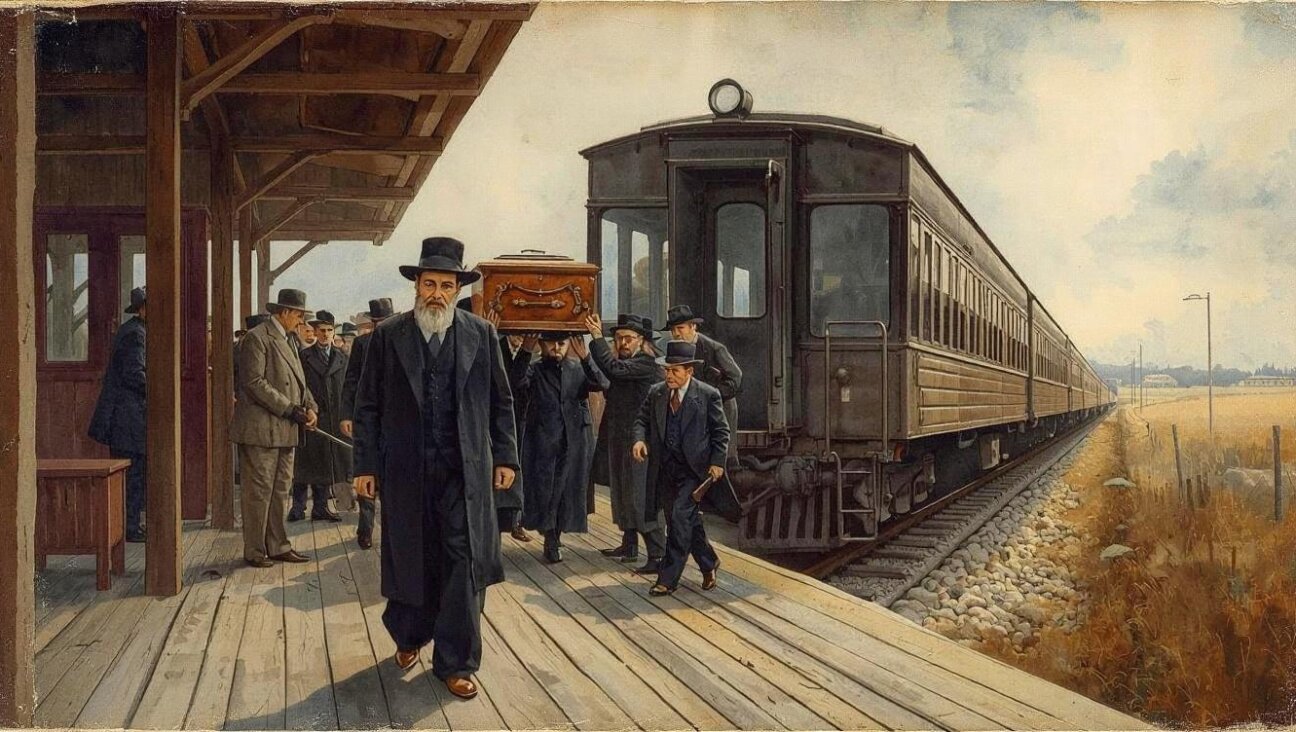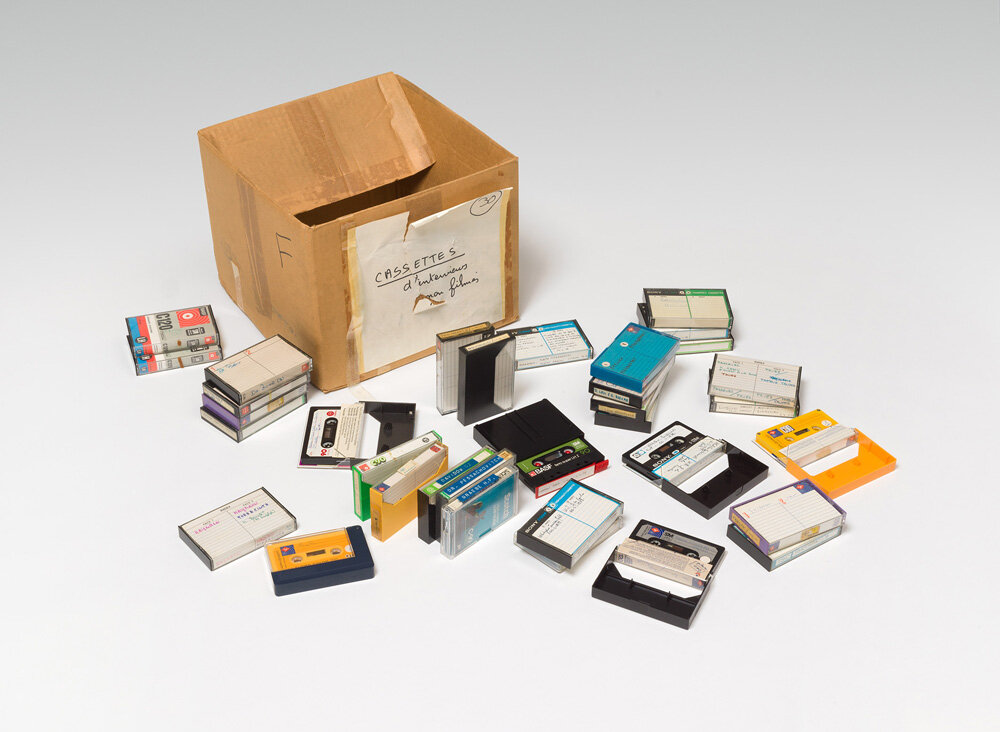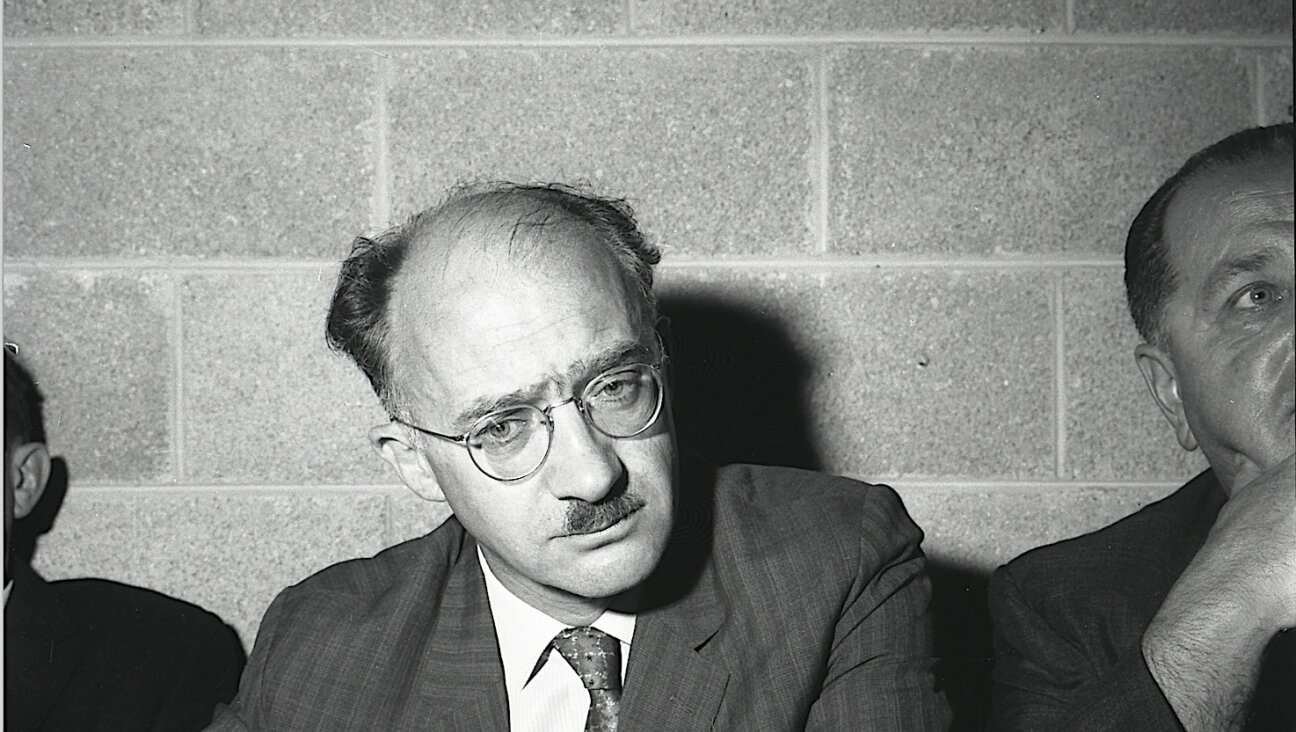8 New Israeli Writers You Need To Read Right Now

Graphic by Angelie Zaslavsky
Dalia Betolin-Sherman is the first Ethiopian woman to publish a volume of short stories in Hebrew. In conversation, she speaks modestly about the success of “How the World Became White,” which won the 2014 Ramat Gan prize for debut literature. I met her at the Tel Aviv café Tola’at Sefarim Maazeh, where she told me in Hebrew that she came to Israel in 1984 when she was 5 and that she doesn’t really remember her life in Ethiopia, where she was born. Betolin-Sherman, who holds degrees in both social work and literature, says she writes intuitively and only afterwards understands the meaning of what she has written. Among her favorite writers are Flannery O’Connor, Alice Munro and Alice Walker.
The stories in “How the World Became White” concern the experiences of Ethiopians living in Israel, although color and race are not mentioned specifically.
“Writing connects all parts of identity,” Betolin-Sherman told me. “People go from place to place, crossing borders, and that is what books do too. They tell something about the human condition.”

Sarah Blau Image by Yanai Yechiel
Sarah Blau had an interesting way of dealing with turning 40 — she wrote a one-act play about a writer working on an adaptation of the biblical story of Yael and Sisera. She will also perform in this work, which was accepted to the Mercaz HaBama Festival in Jerusalem on June 12. We met in Tel Aviv when she was getting ready to go to Germany to speak along with the writers Meir Shalev, Aviad Kleinberg, Yali Sobol, Fania Oz-Salzberger and Assaf Gavron. (Gavron could have been included on this list for his novel, “The Hilltop,” coming out in English this fall. He also translated into Hebrew the screenplay for Natalie Portman’s upcoming film adaptation of Amos Oz’s memoir “A Tale of Love and Darkness.”)
Blau’s first novel, 2007’s “The Book of Creation,” concerns a single religious woman who can’t find a spouse so instead creates a golem. Her second, “Those Well-Raised Girls,” is about the 93 girls in the Warsaw Ghetto who killed themselves rather than let Nazis rape them. Blau hosts a show on the Israeli army radio station with another writer, Nir Baram, every Saturday night and frequently speaks and lectures on writing and Tanakh. In 1999, when she was 25, she began organizing a yearly “alternative Holocaust Remembrance Day” to make Yom HaShoah more relevant to her generation. Each year, she asks 10 different speakers to give a talk about what the Shoah means to them.
Blau says that she considers herself wholly a Jewish writer — albeit a “Gothic Jewish writer” — as her “DNA is in the Jewish myths” and because she is a religious Jew.

Dror Burstein Image by Courtesy of Dror Burstein
In person, Dror Burstein has the demeanor and appearance of a serious writer. If one passed him at the café where I met him in the Neve Tzedek neighborhood of Tel Aviv, one would think him another serious 40-ish guy with brown hair and glasses. However, on the page, Burstein is far from ordinary — he has written five novels, a book of poetry, a book of stories, a nonfiction book about the stories of people on Kibbutz Lohamei Ha’Ghetta’ot, and a book of literary criticism. This is all in addition to his full-time teaching duties at the Ofakim program at Tel Aviv University, and at Alma, a pluralistic center for Jewish learning started by current Knesset member Ruth Calderon. He is only 44; one wonders how he has managed to be so prolific. Burstein’s answer? Getting up at 5 a.m. and working before anything else, alongside his childrens’ hamster. He feels that this way his writing is “a continuation of night, of sleep.”
Burstein’s book “Netanya” is a fascinating and unclassifiable blend of fiction and memoir, science writing and travel writing. Burstein elucidated the textual strategies he employs as we spoke about his professorship in a program focused on intertextual approaches to literature. He says he wants his students not to “proceed in a linear route” but rather to move “sideways,” and he tells me that this is how he writes and thinks as well. His Talmud studies taught him this sideways type of thinking, as talmudic teachings proceed by theme, not logic, he says.
The author’s best friend is a painter, Meir Appelfeld (son of writer Aharon — yes, Israel is a small country), and Burstein tells me that he has learned from the way Appelfeld works. Burstein says he finds editing to be one of the most valuable parts of the writing process; what moves him most, he says, is the “process of second thoughts and structuring after the first burst of creativity.”

Ofir Touché Gafla Image by Yanai Yechiel
Memory is a major theme in all of Ofir Touché Gafla’s work. His first novel, “The World of the End,” tells the story of a widower who wants to find his wife in the afterlife after she dies in a freak rollercoaster accident. Its title comes from a Hebrew expression about dying, halach l’olamo. The expression — derived from the phrase “holech ha’adam el veit olamo” or “man goes to heaven” in Ecclesiastes 12:5 — has long perplexed readers. Gafla says he believes that “memories are your identity,” and it is this this belief that has informed much of his writing.
In addition to his literary activities, Gafla teaches at the Sam Spiegel Film and Television School, incongruously situated in an industrial zone in the Baka neighborhood of Jerusalem. He tells me over lunch at T’mol Shilshom that he loves teaching and feels like Mick Jagger when he goes into class. When asked about the key to being a good teacher, he says, “I like my students and they like me back.”

Straight Out of the Dror: Mishani’s 2013 novel ‘A Possibility of Violence’ was nominated for the Sapir Prize. Image by Yanai Yechiel
Dror Mishani has written two mystery novels. His second, 2013’s “A Possibility of Violence,” was nominated for the prestigious Sapir Prize — the only time a crime novel has appeared on the prize’s short list. Mishani is also an editor at the publishing house Keter; coincidentally he is currently Ofir Touché Gafla’s editor. Prior to that, from 2005 to 2008, he served as the books editor at Ha’aretz. His first book, “The Missing File,” was translated into 14 languages, including English. At the opening of “The Missing File,” Mishani’s protagonist, policeman Avraham Avraham, asks, “Why doesn’t Israel produce books like those of Agatha Christie, or The Girl with the Dragon Tattoo?” The policeman goes on to say that in Israel, the crimes are usually committed by those close-by, such as “the neighbor, the uncle, the grandfather, and there’s no need for a complex investigation to find the criminal and clear up the mystery.” Mishani’s work has already a long way towards helping readers to rethink those clichés and misconceptions.

Merav Nakar Sadi Image by Courtesy of Merav Nakar Sadi
Before she wrote the novel “Oksana,” which won the Sapir Prize for best debut novel in February 2014, Merav Nakar Sadi finished her doctorate in sociology at UCLA and wrote a dissertation called “Doing Psychology, Doing Inequality: Rethinking the Role of Psychology in Creating and Maintaining Social Inequality.” She now works as a sociology professor at Beit Berl College.
“Oksana,” a tale of undocumented foreign workers in Israel, might be seen as an extension of her work as a sociologist. “Each chapter is a monologue,” she told me. “One character speaks about herself or himself. Each one reveals a different part of the story, but in between the chapters is real data about foreign workers.”
In an interview at her home outside Ramat Gan, a Tel Aviv suburb, she explained that when she was finishing her doctorate in 2007 in Los Angeles, she was sitting in a Starbucks and a woman near her had a long cell phone conversation in Hebrew. After she finished, the woman started a conversation with her and suggested that she buy Julia Cameron’s “The Artist’s Way.” Nakar Sadi’s book grew out of following Cameron’s advice to spend an hour a day free writing. When her youngest child Amir was a baby, she would sit with a pencil and paper and write, “no story, no purpose, nothing,” and found this process “joyful,” particularly because it was completely different from the academic and critical approach she was used to.
When asked about the relation between sociology and writing, she said that while she knows “a lot about those realities” of “inequality, injustice, policy,” telling a story about fictional characters allows her to “meet again with those realities but from a different angle.”

Gadi Taub Image by Inbar Zaafrani
Gadi Taub has a career just about every academic in the United States would kill for: a scholarly book published by Yale University Press alongside his 2009 novel, “Allenby Street,” that spawned a TV show. I cannot think of an American academic — except perhaps Erich Segal, the classics scholar who wrote “Love Story” — who has quite that range. Taub, who has a doctorate in American history from Rutgers, wrote about pimps and hookers in “Allenby Street.” His one book in English, “The Settlers,” a nonfiction volume, explores similar ground to Ari Shavit’s “My Promised Land,” combining reportage and interviews with those on both sides of the current conflict in Israel.
In addition to “The Settlers” and “Allenby Street,” Taub’s writing credits include six children’s books, a volume of short stories, and three nonfiction volumes in Hebrew. According to the author Etgar Keret, Taub is Israel’s best writer whose fiction remains untranslated.
I interviewed Noa Yedlin both before and after she won the Sapir Prize for her second novel “House Arrest.” I first met her in late January near her apartment in central Tel Aviv at the HaTachtit café, where she seemed well known by the waitstaff. We spoke again over Skype after she won earlier this year. “Your ambitions are like iPhones, they get updated all the time,” she told me during that second conversation. “All I ever wanted was to be long-listed for the Sapir prize, and 10 minutes after, all I want is to be short-listed.” She added that she had “always been ambitious, but now I feel more comfortable to be ambitious because it seems less far-fetched.” After the Sapir prize, “House Arrest” became a best seller in Israel. “The thing I would like the prize to buy me is time,” Yedlin told me. “I don’t want a yacht or furs, just time to write.”
Yedlin has been working as a journalist since she got out of the army at age 20. In addition to her journalistic training, she has a master’s in East Asian studies. As a writer, she says, she “always had a tendency to the fictional” and after a while as a journalist, had a realization: “Maybe I should write fiction, and invent whatever the hell I want.” She kept her newspaper job at Maariv to earn her living, while she started her first novel.
Despite her recent success, Yedlin said she isn’t succumbing to pressure. “All my life I’ve been the way I’ve been acting, been myself, it worked for me,” she said. “I have no intention to do anything different. I am going to keep on writing the way I write.”
Beth Kissileff is the author of the forthcoming anthology, ‘Reading Genesis’ (Continuum, 2015). Her work has appeared in such publications as nytimes.com and Slate.















